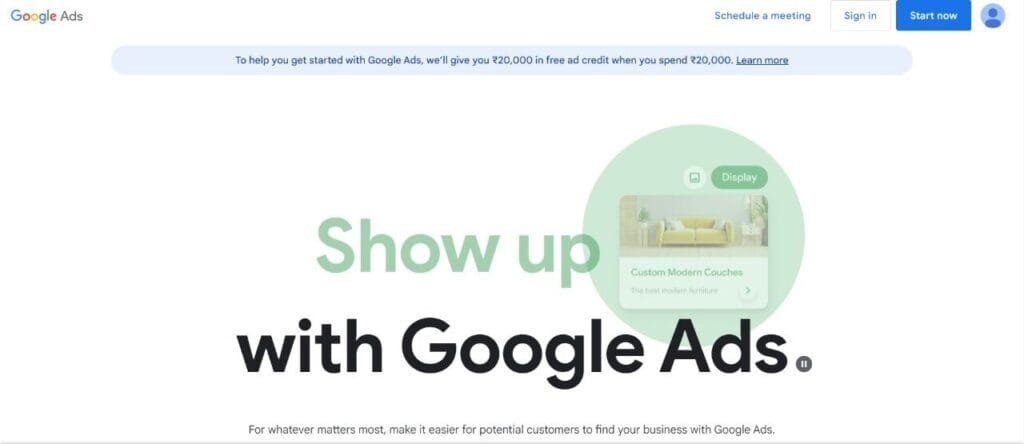This Article has been revised, edited and added to, by Poulomi Chakraborty.
- The Power of Google Trends
- Setting the Stage: Basic Features
- Unraveling Keyword Trends
- Google Trends in Action
- Analytical Tools and Strategies
- Crafting a Content Strategy
- Measuring Impact
- Conclusion
In the vast ocean of digital marketing, understanding and harnessing emerging trends is the key to riding the waves of success. As businesses strive to connect with audiences and ensure their content remains relevant, there’s one tool that has proven indispensable: Google Trends. This powerful yet easy-to-use platform offers real-time insights into what the world is searching for. For businesses and content creators, this is a goldmine of trending keyword opportunities, ripe for the picking.
However, like any powerful tool, the true value of Google Trends isn’t just in its availability but in knowing how to use it effectively. How can one sift through the noise to find keyword gold? How can these insights be converted into actionable content strategies? Dive in as we embark on an enlightening journey into the world of Google Trends and its untapped potential for trending keyword opportunities.
The Power of Google Trends

Google Trends is an incredibly powerful tool for startup founders looking to carve out their niche or find an edge in a competitive market. It allows you to see what the world is searching for, giving you real-time insights into consumer behavior and emerging trends. This data can be pivotal for making informed decisions about your product development, marketing strategies, and content creation.
Imagine you’re launching a new eco-friendly product. By using Google Trends, you can track how often terms like “sustainable products” or “eco-friendly gifts” are searched. This helps you understand the peak seasons for these terms, allowing you to time your campaigns perfectly to capture the most interest.
Strategically Using Google Trends Data
To make the most out of Google Trends, start by exploring the broader terms related to your industry. For example, if your startup is in the tech space, you might look up terms like “tech innovations” or “latest tech gadgets”. Here’s how you can dive deeper:
Analyze Search Interest Over Time
Search interest over time can reveal the ebb and flow of consumer interest in a topic. For instance, if you notice a steady increase in searches for “virtual reality games,” it might be a good time to consider how your products could meet this growing demand. This kind of analysis can also help you avoid fads that spike and then quickly lose public interest.
Compare Trends in Different Regions
Google Trends allows you to compare the popularity of searches across different regions. This is crucial if your startup is planning to expand internationally or if you’re targeting specific geographic markets. For example, if “mobile payment solutions” are trending in Asia but not in Europe, you might prioritize launching your services in Asian markets first.
Identify Related Queries
One of the most useful features of Google Trends is the ability to see related queries. These are searches that people also performed when looking up your main query. This can uncover subtopics and related products that may not have been on your radar. For instance, if you discover that “biodegradable phone cases” is a trending related query to “eco-friendly gadgets,” it might be worth exploring this as a new product line.
Applying Insights to Your Startup Strategy
Once you have gathered and analyzed your data from Google Trends, the next step is applying these insights strategically to boost your startup’s growth.
Tailor Your Marketing Campaigns
Use the insights from Google Trends to tailor your marketing campaigns to match the interest peaks and troughs throughout the year. This means not only launching campaigns at the right time but also using the language and terms that your audience is currently interested in. If “home fitness apps” peak in January (likely due to New Year’s resolutions), plan to increase your advertising budget in December and January.
Innovate Based on Consumer Interest
Keep your product development agile by aligning with consumer interests as they evolve. If Google Trends shows increasing interest in a feature or product type that complements your current offering, consider how you might incorporate that into your development roadmap. For example, if there’s rising interest in sustainability, you might explore how to make your product line more eco-friendly.
Create Content That Resonates
Content creation should be guided by trending keywords to ensure it resonates with your target audience and captures organic traffic. If “how to recycle electronics” is trending, producing blog posts, videos, and social media content around recycling electronics can attract viewers and position your brand as a thought leader.
By integrating Google Trends into your business strategy, you can ensure that your startup remains ahead of the curve and relevant to your audience. This tool is not just about tracking data; it’s about turning those insights into actions that drive growth and engagement in a constantly changing market.
Setting the Stage: Basic Features
Navigating the Interface
When you first visit Google Trends, you’ll be greeted with a simple yet powerful interface designed to help you dive deep into data with ease. The platform is structured to guide you through the process of exploring, comparing, and understanding search trends across various regions, time frames, and categories.
Home Page Overview
The home page offers a quick glance at trending searches and topics, giving you a snapshot of what’s capturing global attention at any given moment. This can spark ideas for content or products that are timely and relevant.
Search Bar Functionality
At the heart of Google Trends is the search bar, where you can enter keywords or topics to see how search interest has varied over time and across different locations. This is your gateway to uncovering deep insights about consumer behavior and market trends.
Exploring the Core Features
Time Range Selection
One of the first features you’ll utilize is the ability to select different time ranges for your data. Google Trends allows you to view search interest from as recent as the past hour to as long as since 2004. This flexibility helps you understand whether a trend is new and gaining momentum or long-standing and possibly declining.
Geographic Breakdown
You can drill down into your data geographically, from a global view right down to city-level insights. This feature is invaluable for startups looking to enter new markets or optimize their regional marketing strategies. Understanding where a product or topic is trending can help focus your efforts where they are most likely to succeed.
Category Filtering
Google Trends allows you to filter data by categories such as Business, Entertainment, Health, and more. This helps refine your results, ensuring you’re not seeing irrelevant data from unrelated sectors. For a tech startup, filtering out non-tech related trends ensures the data is relevant and actionable.
Real-Time Versus Non-Real-Time Data
The platform differentiates between real-time data, covering the last seven days, and non-real-time data, which spans longer periods. Real-time data is crucial for responding to sudden market changes or viral trends, while longer-term data helps in understanding sustained trends and making strategic decisions.
Utilizing Visualization Tools
Trend Graphs
The trend graphs are a visual representation of search interest over time. These graphs can be customized to show comparisons between different terms or geographical comparisons, making it easy to spot patterns or anomalies. For a startup, visualizing the data can quickly highlight the best times for product launches or promotional campaigns.
Heat Maps
Heat maps show the intensity of interest across different regions, visually indicating where a term is most popular. This can guide market entry strategies and localized marketing campaigns.
Strategic Implementation of Basic Features
Now that you’re familiar with the basic features of Google Trends, how can you strategically implement these to benefit your startup? Here are some ideas:
Market Research
Use geographic breakdowns to identify potential markets for expansion. Trend graphs can show you seasonal peaks and troughs in consumer interest, helping plan product launches or sales.
Content Strategy
Utilize category filtering and search data to generate content that meets the current interests of your target audience. This not only boosts SEO but also engagement on social media and other platforms.
Product Development
Monitor the rise and fall of related queries to gauge consumer interest in potential new features or products. This can be a key driver in prioritizing development projects according to what will meet the market’s needs.
By mastering these basic features of Google Trends, your startup can gain a significant advantage in understanding and responding to consumer trends. This foundation sets the stage for more advanced applications and deeper insights that can propel your business forward in a competitive landscape.
Unraveling Keyword Trends

Keyword research is the cornerstone of SEO, content marketing, and digital advertising. With Google Trends, you can take this to the next level by not only identifying popular keywords but also understanding the nuances behind their popularity. This section will guide you through using Google Trends for advanced keyword research, helping you to optimize your strategies and connect more effectively with your audience.
Identifying Emerging Keywords
Start by identifying keywords that are gaining traction but aren’t yet saturated in the market. Google Trends can show you “Breakout” keywords, which are terms that have seen a significant spike in searches recently. These are golden opportunities for startups to get ahead of the competition by moving quickly on trends as they emerge.
Analyzing Seasonal Trends
Understanding the seasonality of certain keywords can optimize your content and advertising schedule. For example, if you’re in the retail industry, knowing when terms like “gifts for mom” or “back to school sales” begin to climb can help you prepare campaigns at just the right time to capture peak interest.
Strategic Keyword Analysis
Long-Term Versus Short-Term Trends
Distinguish between fads and growing trends by looking at their search interest over an extended period. A keyword may spike abruptly due to a specific event and then quickly fade away, which is characteristic of a fad. In contrast, a genuine trend will show a gradual increase in search volume over months or even years.
Geographic Specificity in Keyword Popularity
Customize your approach based on where specific keywords are popular. If a particular term is trending in a region where you’re considering expansion, you can tailor your products or marketing to resonate with that audience. Google Trends’ geographic insights can guide localized SEO strategies and content creation, making your efforts more relevant to regional audiences.
Applying Keyword Insights
Enhancing Content Strategy
Use your findings from Google Trends to create content that is not only timely but also highly relevant to what your target audience is currently interested in. This approach ensures that your blogs, articles, and social media posts are more likely to engage and attract an audience, ultimately boosting your site’s traffic and user engagement.
Optimizing Marketing Campaigns
With a deep understanding of keyword trends, you can design marketing campaigns that speak directly to the interests and needs of your target market. This makes your advertising more effective and increases the ROI of your marketing spend.
Informing Product Development
Stay ahead of the curve by aligning your product development with the evolving interests of your consumers. If a keyword related to a feature or product type starts trending, consider how you can incorporate this into your offerings.
Moving Beyond Basic Trends
Correlation Analysis
Investigate how different keywords affect each other. For instance, an increase in searches for “sustainable packaging” might correlate with a rise in “eco-friendly products.” Understanding these relationships can help in predicting future trends and preparing your business accordingly.
Competitor Keyword Tracking
Monitor keywords that are crucial for your competitors. This can give you insights into their strategy and help you identify areas where you can differentiate yourself.
By thoroughly analyzing and applying keyword trends from Google Trends, startups can gain a competitive edge in nearly every aspect of their business, from marketing to product development. This tool offers a wealth of information that, when leveraged properly, can significantly enhance your business strategies and market positioning.
Google Trends in Action

Google Trends is more than just a tool for observing what people are searching for; it’s a dynamic resource that can guide strategic decisions across various business functions. This section explores practical applications and case studies that demonstrate the transformative power of Google Trends when used effectively in a startup environment.
Case Study: Launching a Product Based on Trend Data
Consider a startup that noticed an increasing trend in “home workout equipment” early in the year. By analyzing Google Trends data, they were able to pinpoint which specific products—like resistance bands and yoga mats—were gaining popularity. They quickly adjusted their inventory and marketing focus to these items, capitalizing on the trend before it reached its peak. As a result, they saw a significant increase in sales and were able to establish a strong position in a rapidly growing market niche.
Strategic Application: Seasonal Marketing Adjustments
A boutique that specializes in seasonal goods used Google Trends to optimize their marketing campaigns. By monitoring search trends for terms like “summer beach gear” or “winter holiday decorations,” they could start their promotions just as these searches began to increase. This timing allowed them to maximize engagement and sales by reaching consumers exactly when they started thinking about seasonal products.
Advanced Strategic Implementations
Market Expansion Decisions
A tech startup used Google Trends to assess demand for smart home devices in various countries. By analyzing geographic data on search trends, they identified several markets with rising interest but low competition. This informed their decision to target these regions with localized marketing campaigns, significantly boosting their market penetration.
Crisis Management and Response
During a product recall, a food company monitored Google Trends to gauge public concern about the issue. They used this data to tailor their communications, addressing the most common queries and concerns in their updates and advertisements. This proactive approach helped rebuild trust and mitigate the negative impact on their brand.
Leveraging Google Trends for Content Creation
Blogging With Precision
A lifestyle blog used Google Trends to guide their content strategy. By identifying high-interest topics within their niche, such as “DIY home decor” during a surge in home improvement interest, they could create highly relevant content. This strategic alignment with trending topics drove increased traffic and engagement on their blog.
Social Media Engagement
A startup in the fashion industry monitored trending colors and styles on Google Trends to inspire their social media posts. By aligning their content with these trends, they increased their visibility and engagement, attracting a larger following that was actively interested in trending fashion topics.
Measuring Impact and Refining Strategies
Feedback Loop
Using Google Trends data, companies can set up a feedback loop where they continuously refine their strategies based on the latest data. For instance, if a new product launch does not lead to an expected increase in related searches, a company might need to adjust its marketing tactics or even revisit product features.
Integrating With Other Data
Smart startups combine Google Trends data with other analytics, such as website traffic and conversion rates, to get a fuller picture of their strategies’ effectiveness. This holistic approach allows for more nuanced insights and more informed decision-making.
Analytical Tools and Strategies

Integrating Google Trends with Other Analytical Tools
To fully leverage the power of Google Trends, it’s essential to integrate its data with other analytical tools. This approach enhances the depth and accuracy of insights you can derive, enabling more informed decision-making and strategic planning. Here’s how to combine Google Trends with other key tools:
Combining with Google Analytics
Integrating Google Trends data with Google Analytics allows you to see not just what people are searching for, but how those trends directly impact your website’s traffic and user behavior. For instance, if you notice a spike in a particular trend, you can quickly assess how this has affected your site’s traffic and conversion rates, allowing for rapid response and strategy adjustment.
Linking with Social Media Analytics
Social media platforms offer rich data about consumer engagement and interests. By comparing trends from Google Trends with engagement data from social media analytics, you can gauge the public’s interest level in topics related to your brand and optimize your social media content to better align with these interests.
CRM Data Integration
Merging CRM (Customer Relationship Management) data with insights from Google Trends can provide a more comprehensive view of customer preferences and behavior. This information is crucial for personalizing marketing efforts and improving customer service by anticipating needs and trends relevant to your audience.
Advanced Analytical Strategies
Predictive Analytics
By using advanced statistical models and machine learning techniques, you can extend the insights gained from Google Trends to predict future market movements. For example, predictive analytics can help forecast demand for products based on search trend trajectories, giving your business a competitive advantage in inventory and marketing planning.
Sentiment Analysis
Combine Google Trends data with sentiment analysis tools to understand not only the volume of searches but also the sentiment behind these searches. This can be particularly useful in managing brand reputation and in tailoring communications during a crisis or marketing campaign.
Competitive Analysis
Use Google Trends to track not only your own brand’s search trends but also those of your competitors. Analyzing these trends can help you identify competitive strengths and weaknesses and develop strategies to capitalize on market opportunities or defend against competitive threats.
Tactical Implementation of Analytical Tools
Real-Time Monitoring and Alerts
Set up real-time monitoring and alerts for key search terms related to your business. This proactive approach allows you to respond swiftly to sudden changes in consumer interest or to emerging trends that could impact your market position.
Segment Analysis
Break down your Google Trends data by different demographic and psychographic segments. This granular approach helps tailor your products and marketing messages to the specific needs and preferences of different customer groups.
A/B Testing
Use insights from Google Trends to design A/B tests that can validate the effectiveness of different marketing messages, product features, or campaigns. This testing can be critical for optimizing conversion rates and maximizing the ROI on marketing expenditures.
Leveraging Insights for Strategic Decisions
The integration of Google Trends with other analytical tools not only enhances the breadth and depth of your data analysis but also empowers your business to make more precise and strategic decisions. Whether it’s refining marketing campaigns, adjusting product offerings, or entering new markets, the combined power of these tools provides a robust foundation for driving business growth and adapting to rapidly changing market conditions.
Through these sophisticated analytical strategies and tools, startups can transform raw data into actionable insights, creating a competitive edge and fostering a culture of data-driven decision making.

Related: Check out our free SEO suite

Crafting a Content Strategy
Building a Robust Content Strategy
Developing a content strategy that resonates with your target audience and drives engagement is crucial for any startup looking to make a mark in today’s digital landscape. Google Trends can be an invaluable asset in this endeavor, providing insights that inform not only what content to create but also when and how to share it for optimal impact.
Identifying Content Themes
Begin by using Google Trends to identify overarching themes that are gaining traction within your industry or among your target audience. This can involve monitoring specific keywords or broader topics that capture shifts in consumer interests and preferences. By aligning your content with these themes, you ensure relevance and increase the likelihood of engaging your audience.
Timing and Seasonality
Analyzing the seasonality of certain topics helps you plan your content calendar more effectively. For instance, if you’re in the fitness industry, you might see increased interest in “workout routines” in January as people pursue New Year’s resolutions. Planning content around these times maximizes your visibility and engagement.
Deep Dive into Content Types
Blog Posts
Use Google Trends to identify which questions and topics are trending and develop blog posts that answer these queries. This not only boosts SEO but also positions your brand as a thought leader by providing valuable information that meets your audience’s needs.
Videos
Video content can be particularly engaging if it taps into trending topics. Check Google Trends for rising interest in visual content like tutorials, unboxings, or DIY projects relevant to your products or services.
Social Media

For social media, leverage real-time data from Google Trends to participate in current conversations or to react quickly to emerging trends. This helps in maintaining a fresh and timely social media presence that resonates with current and potential followers.
Strategic Content Distribution
Multi-Channel Approach
Ensure that your content reaches the widest possible audience by adopting a multi-channel distribution strategy. Tailor your content’s format and messaging to fit the unique characteristics and user expectations of each platform, from Instagram to LinkedIn, based on the insights gathered from Google Trends.
Influencer Collaborations
Identify influencers who are engaging with trending topics relevant to your brand. Collaborations can extend your reach and lend credibility to your content, particularly if the influencer’s audience aligns with your target demographic.
Measuring Success and Iteration
Analytics and KPIs
Use analytics to track how well your content performs against key performance indicators (KPIs) like engagement rates, traffic, and conversions. This feedback is vital for understanding what works and what doesn’t, allowing for continual refinement of your strategy.
Responsive Adjustments
Stay flexible and ready to pivot your strategy based on what the ongoing analysis of Google Trends and content performance metrics tells you. This agility enables you to capitalize on unexpected opportunities and mitigate any downturns in engagement.
Measuring Impact
In today’s fast-paced digital environment, it’s crucial for startups to measure the impact of their strategies to understand what’s working and what needs adjustment. Google Trends can be a pivotal tool in these evaluations, providing data that, when paired with other metrics, offers a comprehensive view of a strategy’s effectiveness.
Establishing Key Performance Indicators (KPIs)
Selection of KPIs
Begin by identifying which key performance indicators (KPIs) are most relevant to the strategies you’ve implemented. These might include website traffic, conversion rates, social media engagement, or even specific content performance metrics. The selection of KPIs should align directly with your business objectives and the goals of the particular strategy being measured.
Benchmarking
Set benchmarks based on historical data or industry standards to measure your current performance against. This will provide a clear baseline from which to gauge the effectiveness of strategies informed by Google Trends data.
Integrative Analytics Approach
Combining Data Sources
Integrate Google Trends data with other analytical tools like Google Analytics, CRM systems, and social media analytics platforms. This allows you to see how trends in search correlate with changes in website behavior or customer engagement, providing a more rounded view of your strategy’s impact.
Correlation Analysis
Perform correlation analyses to see how changes in search trend volumes affect other KPIs. For example, an increase in searches for a product category your startup dominates could be directly correlated with an uptick in your sales figures.
Real-Time Monitoring and Responsive Adjustments
Dashboard Utilization
Utilize dashboards that consolidate real-time data feeds from Google Trends and other analytics platforms. This enables continuous monitoring and quick responses to sudden shifts in consumer interest or behavior.
Agile Response Mechanism
Develop an agile response mechanism that allows you to rapidly adjust your strategies based on the data you’re monitoring. This could mean reallocating marketing spend, tweaking campaigns, or even pivoting product offerings depending on the immediate feedback from your analytics.
Long-Term Impact Analysis
Trend Tracking Over Time
Track the long-term trends of your KPIs to understand the enduring impact of your strategies. This analysis can highlight sustained improvements or declines in performance, indicating the need for more fundamental changes in strategy.
ROI Calculation
Calculate the return on investment (ROI) for strategies informed by Google Trends. This involves comparing the revenue or value generated from these strategies against the cost of their implementation. An effective ROI analysis not only justifies past initiatives but also guides future budget allocations.
Conclusion
Navigating the nuanced landscape of digital marketing requires more than just an understanding of SEO or content creation. It calls for a finger on the pulse of the audience’s evolving interests, needs, and behaviors. Google Trends emerges as a vital tool in this quest, offering real-time insights that, when harnessed effectively, can transform the relevance, engagement, and impact of content.
Yet, the true power lies not just in identifying trending keywords but in weaving these insights into a dynamic, responsive content strategy. It’s about ensuring that content is not just seen but resonates, not just attracts but engages, turning passive viewers into active participants, and prospects into loyal customers.
In the dance between content creation and audience engagement, Google Trends stands as a pivotal partner, guiding, illuminating, and enhancing every step, ensuring that businesses move in sync with the rhythm of the audience’s evolving interests and the dynamic digital landscape.
Read next:
- Structured Data and Schema Markup for Financial Websites
- The Importance of Technical SEO in Financial Services
- On-Page SEO Essentials for Banking Websites
- Keyword Research Basics for Financial Services SEO
- Why SEO is Critical for the Banking Industry






















Comments are closed.